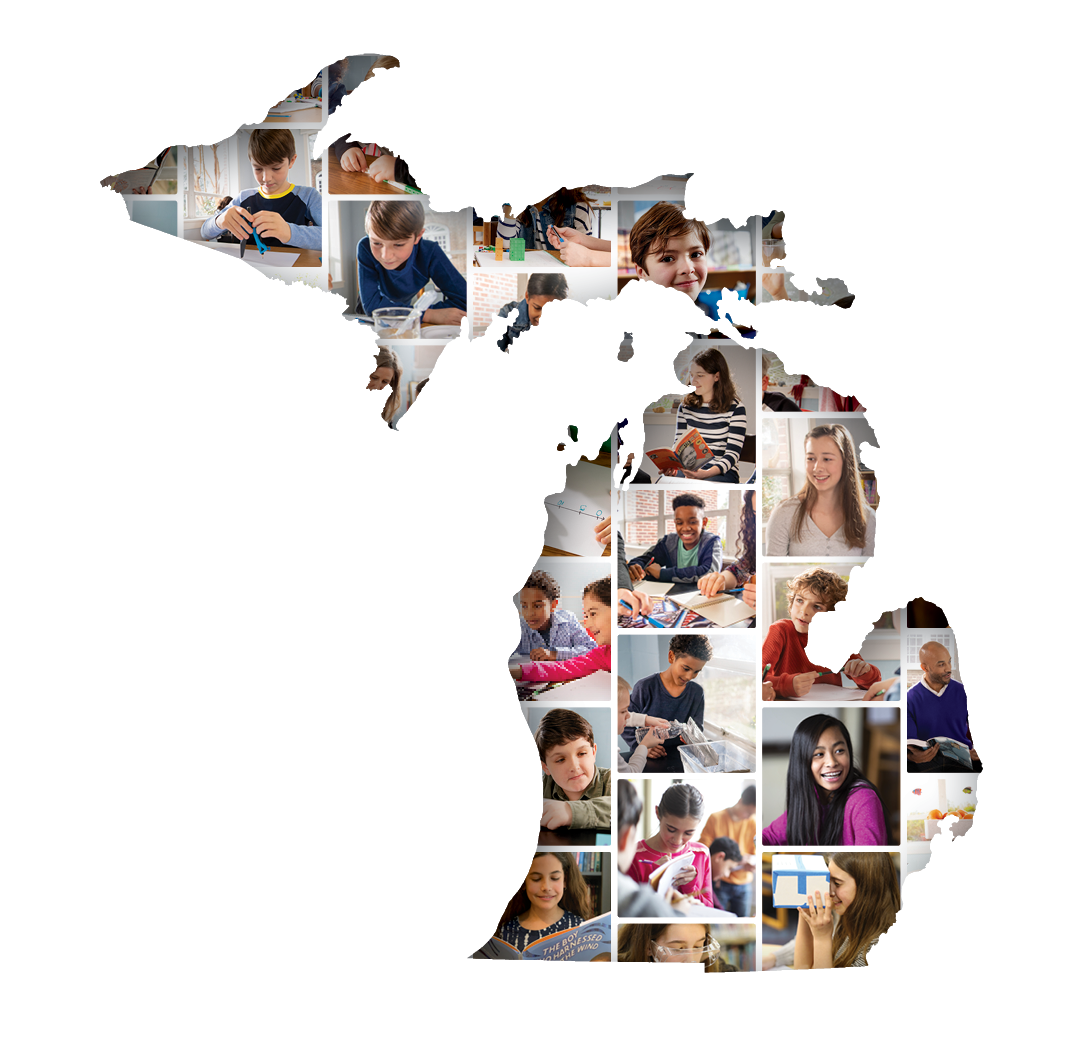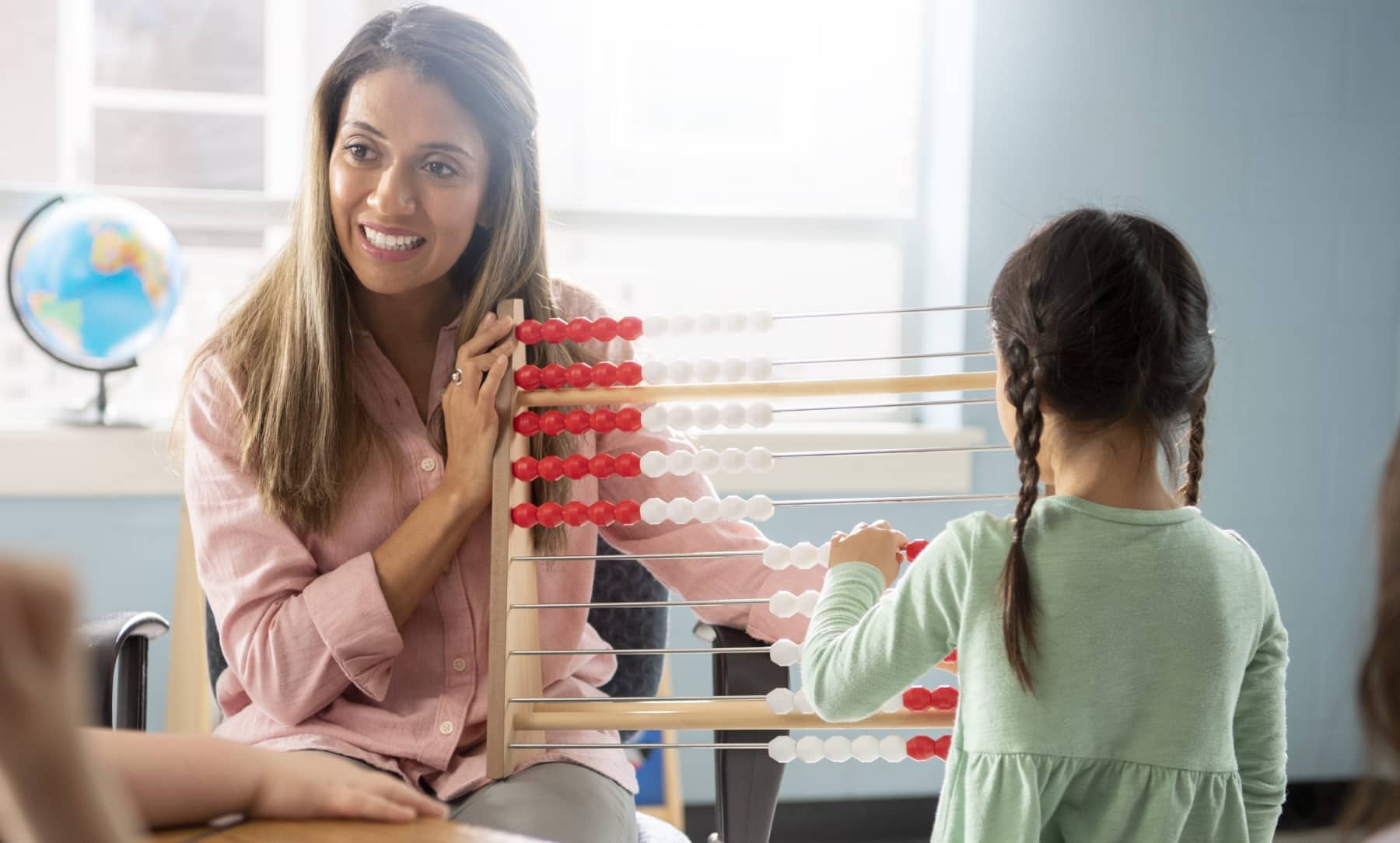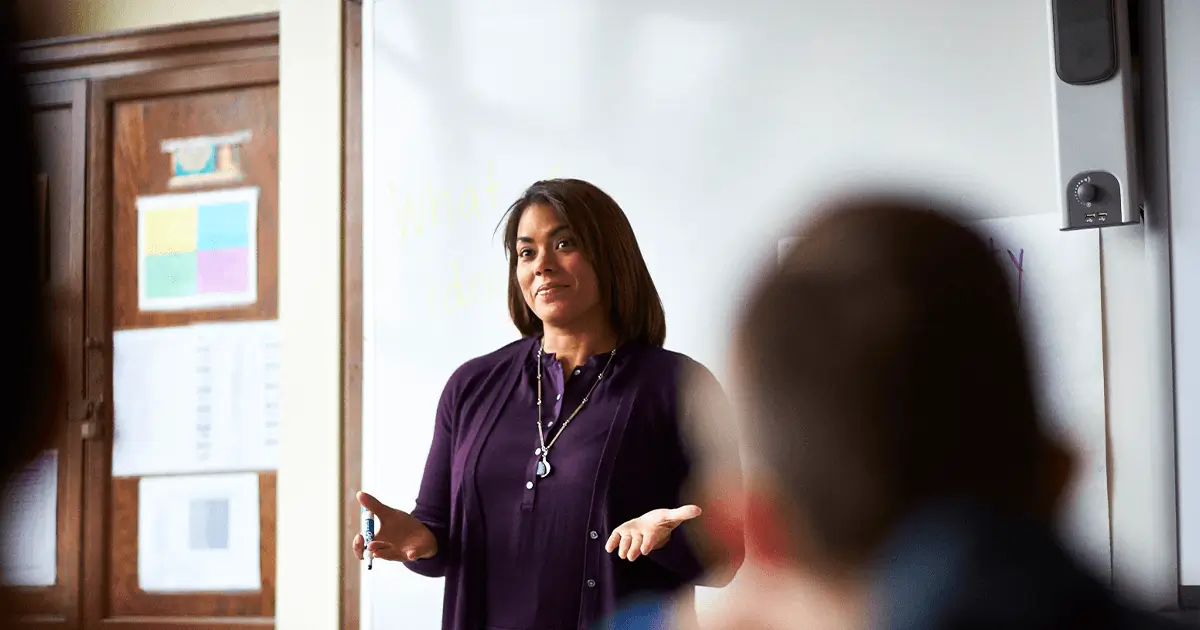Posted in: Aha! Blog > Eureka Math Blog > Eureka Math > Math For All: Past, Present, And Future
Math is not a set of isolated skills and algorithms. It is an integral element of almost every facet of humanity. Find out how contextualizing the history of math helps students see themselves as mathematicians while they build their conceptual understanding.
Math is a Human Endeavor
When someone says math, what do you think? Maybe you conjure up an image of a sheet of math problems or a set of rules to follow. Sadly, that may be how some students experience math. Others may think of how math occurs in their lives—through telling time, cooking, or managing their finances. Yet others may see math as a way to communicate ideas and solve real-world problems. At Great Minds®, we know math is not a set of isolated skills and algorithms, but an integral element of almost every facet of humanity. In Math through the Ages: A Gentle History for Teachers and Others, the authors state, “Mathematics is an ongoing human endeavor, like literature, physics, art, economics, or music. It has a past and a future, as well as a present” (Berlinghoff and Gouvêa 2002, p.1). We believe that students must understand mathematics not only conceptually but also in how it relates to the real world and real people. That’s why we intentionally designed Eureka Math2 not only to teach students math but to demonstrate the importance of, and even the joy of, math throughout human history—past, present, and future.
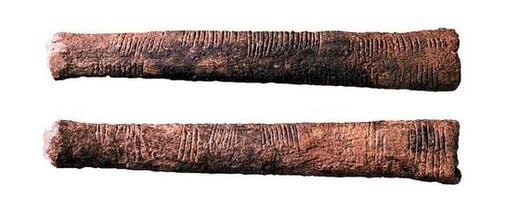
Ishango Bone – “agefotostock/Alamy Stock Photo
Indeed, humans around the world and across time have used mathematics to measure and represent quantity, time, and distance. For example, a kindergarten lesson in Eureka Math2 shows a 25,000-year-old bone that features the earliest known example of written mathematical thinking. It was discovered in 1950 at Ishango in what is now the Democratic Republic of the Congo. The bone has organized sets of notches similar to tally marks. Although scientists still debate the exact purpose of the marks, the consensus is that they were used to track a count and represent a total.
Many cultures have contributed to and advanced the field of mathematics. Today, we all use aspects of mathematics in our lives. We know that to solve many of society’s current problems and discover new information about our world and the universe, we must have skilled mathematicians, scientists, and engineers. We must teach every child with accessible, engaging, knowledge-building curricula.
A Vision for Equity in Math
The writers of Eureka Math2 believe that every child from every background deserves to access, relate to, engage with, and acquire deep mathematical content from the highest-quality materials.
We believe that all students can succeed in math and that a strong foundation of math knowledge results in opportunities for further education, STEM career pathways, and improved lives. Our vision of success in mathematics is when a student
- has a positive math identity and growth mindset—believing that they can learn mathematics,
- feels they belong in an inclusive community of people who engage in mathematical endeavors,
- knows mathematics to be a human endeavor motivated by a desire to make sense of the world around them and the joy of pursuing “what if” mathematical wonderings,
- engages in student-to-student mathematical discourse,
- is developing secure knowledge of the key ideas in mathematics, and
- employs mathematical habits of mindi when solving problems.
i The term “mathematical habits of mind” is used here as an encompassing term for states’ different approaches to math practices and processes, whether those are the Standards for Mathematical Practice as found in the CCSSM or state-specific, such as mathematical process standards (TX), process goals for students in mathematics (VA), or the Mathematical Thinking and Reasoning Standards (FL).
Eureka Math2 capitalizes on mathematics as a human endeavor as well as on students’ natural curiosity about mathematics in the world around them. It does this by incorporating two unique and engaging features: Math Past and context videos. While teachers will need to employ many other methods of instruction in the curricula to provide students with a multifaceted, high-quality, and intentionally equitable mathematical education, in this post, we’ll focus on how these two curriculum features support our mission of helping every child achieve greatness. Forthcoming posts will address how other components of the instructional design and pedagogy of Eureka Math2 ensure equitable access to high-quality mathematics instruction.
Connecting Math Past to Math Present
To honor the diverse contributions to the development of the field of mathematics, to build knowledge about our shared math history, and to empower every child to see themselves as able to do mathematics, nearly every module in Eureka Math2 includes a feature called Math Past. Math Past tells the history of some big ideas in the module. It tells the story of the mathematics through artifacts, discoveries, and other contributions from cultures around the world. Math Past also provides ideas about how to engage students in the history of mathematics. The curriculum writers wanted to build students’ knowledge of the history of math while enriching the mathematical concepts students learn. The writers also wanted to celebrate and incorporate the expertise of diverse communities and their cultures, whether in the past or present.
Math Past shows students in a tangible way that math is an integral part of all societies and cultures. It helps students see that people have different ways of thinking about and doing math, including different ways of counting, representing numbers, computing, telling time, and using mathematical tools. It also demonstrates that people in many places and times have approached problems in varied ways and shared what they have learned and that those diverse perspectives have advanced mathematics for humankind.
While Math Past may only seem like a door to the understanding mathematical discoveries and achievements of the past, students will also learn about and be inspired by people who made these discoveries and their mathematical pursuits. Our writers hope Math Past inspires students’ current and future mathematical pursuits. To that end, through Math Past and many other elements of Eureka Math2, students work collaboratively as a community on math problems, share and talk about diverse mathematical concepts and representations, and engage in practices of mathematicians. We hope these activities will help students see where math could improve their future, help them solve a problem, or bring about innovation.
Math Past Curricular Examples
Let’s look at how students experience Math Past in a Eureka Math2 lesson.
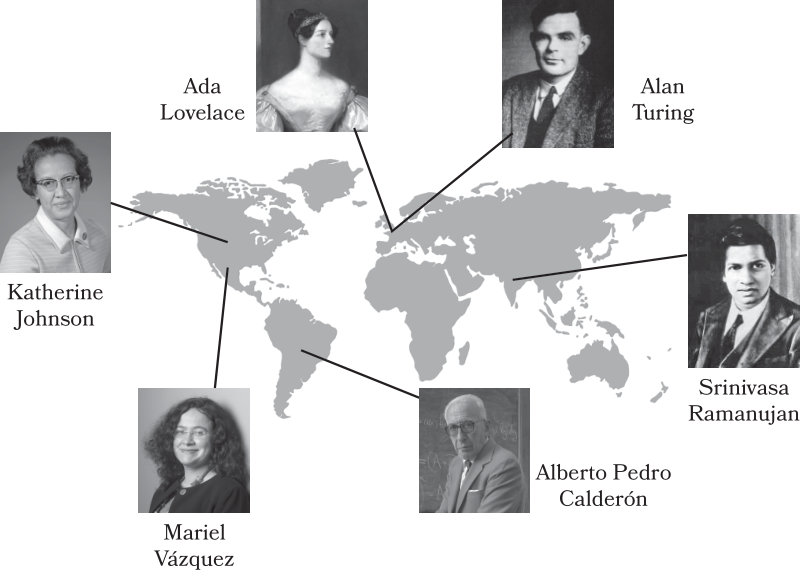
Lovelace – Portrait of Ada Lovelace, 1836/Wikimedia Commons
Turing – famouspeople/Alamy Stock Photo
Vazquez – University of California Davis. Photo by Gregory Urquiaga
Calderon – Photograph Courtesy of the University of Chicago
During a grade 1 module 6 lesson, students engage in productive struggle as they solve nonroutine problems. They “explain to themselves the meaning of the problem, look for entry points to begin the work on the problem, and plan and choose a solution pathway,” addressing one of the mathematical habits of mind of making sense of problems and persevering in solving them. Then students share, compare, and connect their solution pathways as a class. Through explaining their own work and listening to and questioning the work of others, students deepen and enrich their mathematical understanding. During the lesson Debrief, students look at a map of the world showing some diverse and notable mathematicians and their locations. They discuss how mathematicians persevere to solve challenging problems and work together to help the world. The Math Past Teacher Resource provides more in-depth information about each mathematician and suggestions for how students may continue studying past and present mathematicians and possibly even think about a math career they would like to pursue.

A real-world lesson in grade 2 module 5 about determining when and why precise measurements are needed highlights the biography of Katherine Johnson. Johnson was the first African American to work with the American Space Task Group. Her calculations were crucial for allowing NASA to safely send and return the first astronauts to space in 1961 and to the moon. Students discuss why she needed exact numbers rather than estimates in her calculations. Students go on to reason about which real-life situations require precision rather than estimation. Later, they measure accurately, solve word problems with lengths, and label their answers with an appropriate unit (addressing the mathematical habit of mind of attending to precision). The Math Past Teacher Resource highlights the esteemed group of women known as Hidden Figures at NASA. Students are asked to think about what it means to be a “human computer,” why precision is important in mathematics, and how incredibly valuable were the contributions of this team of women.
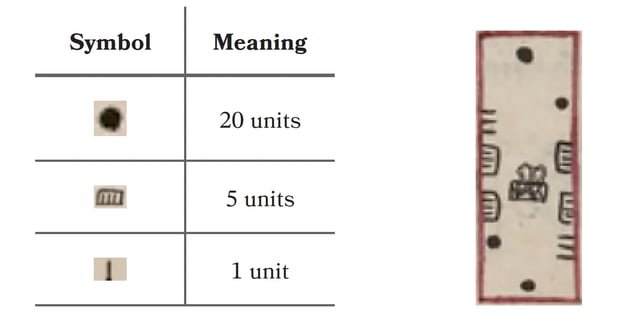

In grade 6 module 5, students are highly engaged in studying area by examining a sketch from the Codex Vergara, a document written around 1540 CE to show the landholdings of families in Aztec villages. Students decode the symbols to determine the side lengths, perimeters, and areas of the fields. Then students work in pairs to draw polygons composed of rectangles in the coordinate plane. Partners find more than one way to determine the area of various polygons shown in the grid. When students determine the area of a polygon by decomposing it into rectangles and apply their knowledge of the area of a rectangle, they look for and make use of structure, addressing the mathematical habit of mind of looking for and making use of structure. The Math Past Teacher Resource includes information about how the Aztecs recorded the perimeters and areas of fields. It also includes other ancient area problems for students to engage in and solve.

Later, in grade 8 module 5, students learn to write and solve systems of equations for problems that use ancient Chinese numbers. The problems in the lesson were translated from one of the most influential mathematical texts of all time: Jiuzhang Suanshu, translated as Nine Chapters on the Mathematical Art. The chapter titled “Fangcheng,” or “Rectangular Arrays,” contains 18 problems that address issues of trade, crop yield, the number of animals, and other situations that can be solved with systems of linear equations. When students use systems of equations to represent real-world contexts involving comparison of weights and the trading of livestock, they reason abstractly and quantitatively (another mathematical habit of mind). The Math Past Teacher Resource guides teachers to prompt students to explore answers to questions such as the following: Are the techniques used today for solving systems of linear equations similar to those used in the past? What are some alternative ways to represent a system of linear equations? Are there alternative ways to solve systems of linear equations?
Bringing Math to Life
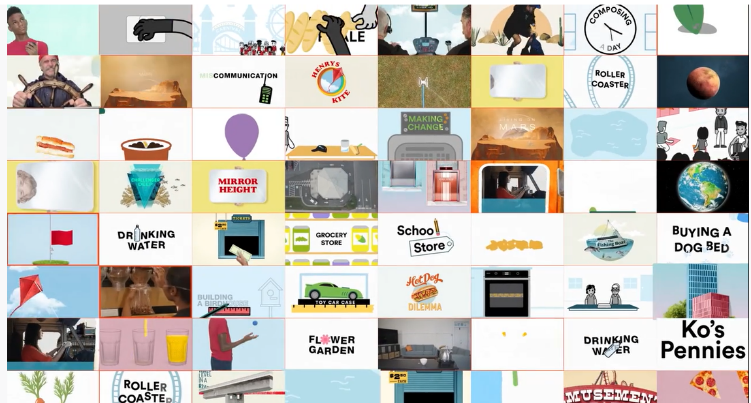
Math Past highlights how humans engaged with mathematics in the past, and context videos highlight how we use math to solve problems in our everyday lives and make sense of the world around us. Eureka Math2 lessons include more than 190 videos. The curriculum offers three types of highly engaging, wordless math context videos: character animation, collage animation, and live action.
Students can identify with the diverse set of actors and characters in the videos, which help students visualize how math is part of everyday life. Through these videos, students will more readily realize that math surrounds them and that they, too, can engage in mathematical pursuits. The videos allow students to see themselves in the math problems they encounter, which lowers the barrier to engagement early in a lesson and makes the math classroom a more welcoming place. Wordless videos in lessons serve many other purposes as well, such as the following:
- Make the context for a given problem come alive, putting all students on the same footing by giving them the requisite background knowledge.
- Remove any language and reading barriers to the written word problem.
- Raise the accessibility of mathematics through accurate and inclusive representation.
- Show the many ways in which we interact with math in the world around us and how these interactions spark curiosity and joy.
- Help students see the delight and wonder associated with being a mathematician.
- Create excitement and buzz in the classroom about what the new word problem will hold.
- Invite students to tell the story of the math problem, to notice, to wonder, and to drive the discussion.
Collage Animation Videos
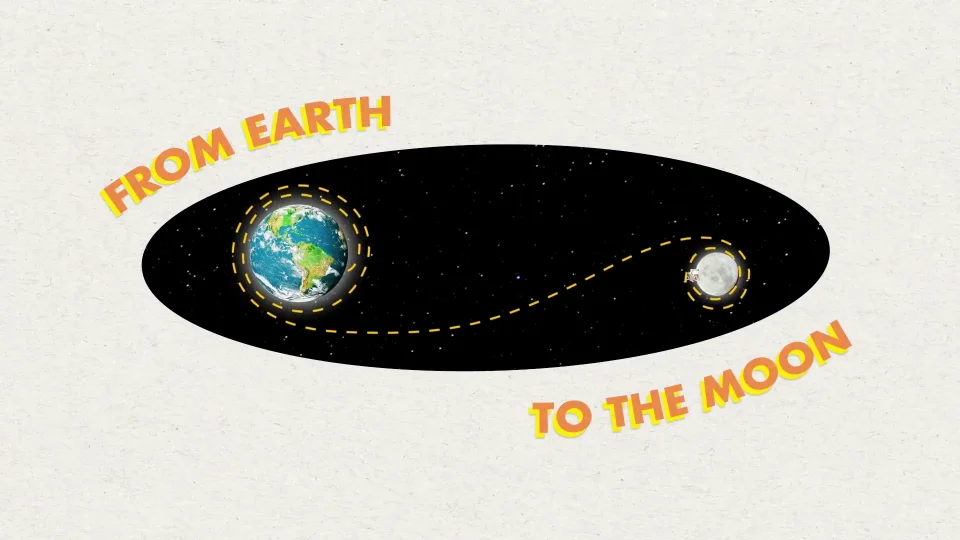
Collage animation videos are designed to bring math to life. They incorporate photos and video clips of real people, places, and events while also highlighting a math concept or problem. For example, students in grade 6 module 1 watch the video “From the Earth to the Moon,” which prompts them to notice, wonder, and ask mathematical questions about the video. Then students identify which rates are useful for solving problems involving distance and time. They use the rates and model with mathematics, one of the mathematical habits of mind, when they solve problems such as “How many days would it take a horse to run from Earth to the moon?”
Did you notice the context connection to the grade 2 Math Past about Hidden Figures in the “From the Earth to the Moon” collage animation video? A primary tenet of Eureka Math2 is learning mathematics as a coherent and engaging story.
Live Action Videos
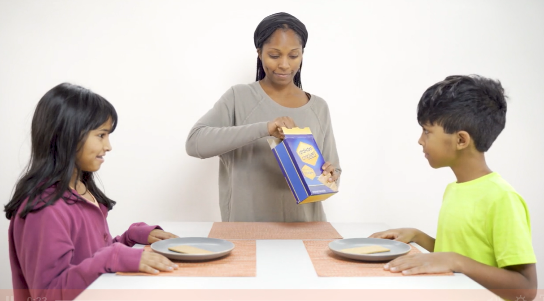
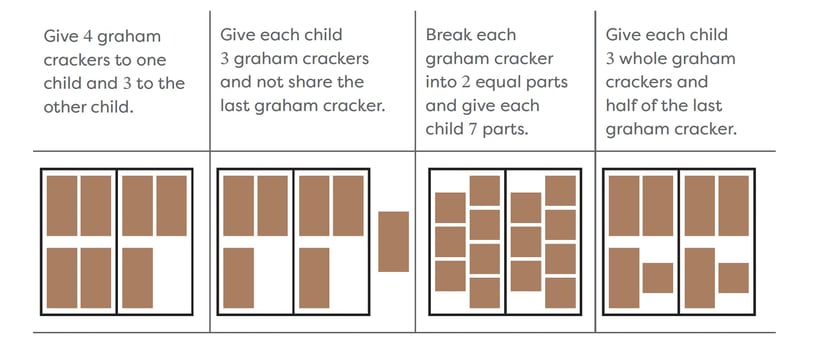
Live action videos let students see other people explore math concepts everywhere, just as they do in the classroom. After students in grade 3 module 5 watch “Sharing Graham Crackers,” they talk about what they notice and wonder. Then they use paper squares and scissors to represent and determine how many graham crackers each child gets when the crackers are shared equally. The class engages in a discussion to share, compare, and connect the various ways they solved the problem. Later in the lesson, students attend to precision, addressing one of the mathematical habits of mind, as they specify the whole for a fractional unit and consider how the sizes of different fractional units relate to one another.
Character Animation Videos
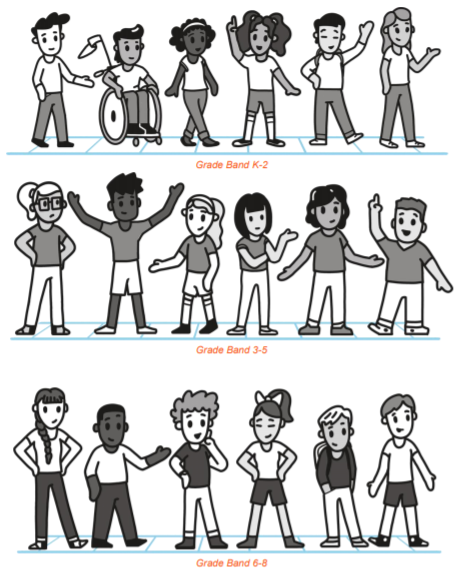
The animation videos feature unique characters that students will get to know, relate to, and ultimately see themselves in. Students observe the characters as they experience struggle, curiosity, achievement, pride, and even joy in the act of being mathematicians. When creating the characters for the videos, the Eureka Math2 writers asked, How can we help students engage in and relate to the mathematics in this lesson? Who needs to see themselves represented? Who needs to see themselves as a mathematician?
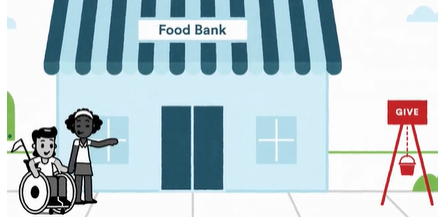
Grade 1 students will be delighted to see the recurring characters in “Ko and Baz’s Coins” combine their coins and demonstrate an act of kindness. After sharing their noticing and wonderings, students are presented with a related word problem to solve. Partners work together and choose tools such as coins, drawings, or number sentences to represent and solve the problem, attending to the mathematical habit of mind of using appropriate tools strategically. A class discussion highlights various ways to solve problems involving tens efficiently.
Click here to hear Louisiana Eureka Math teachers’ reflections on using the context videos with their lessons.
Building Students' Math Identities in a Learning Community

In the report Tools and Guidance for Evaluating Bias in Instructional Materials, the authors assert that “students’ perceptions of their world, their understanding of and attitudes toward others, and their view of self are greatly influenced daily by an educator’s selection of instructional materials” (Comprehensive Center Network Region 8 2020, p. 1). They go on to explain that “by ensuring young people access learning materials that expose them to diverse images and narratives, school teams will support students of varying backgrounds in developing a healthier self-concept and greater self-esteem. This has the potential to create a balanced learning environment that addresses or corrects pervasive misconceptions. Additionally, promoting instructional materials that value or prioritize diversity allows students to see themselves as a part of the learning cycle and contributes to creating an inclusive community, a critical step in promoting social justice and equity in a school setting” (Comprehensive Center Network Region 8 2020, p. 1).
As in Math Past and the context videos, the names and images of characters used to illustrate problems in the curriculum also “provide a balanced portrayal of various demographic and personal characteristics” (EdReports.org n.d., p. 16).
|
Story of Units® |
Story of Ratios® and Story of Functions® |
|
Tam, Kit, Zan, Ren, Mac, Jon, Baz, Liv, Jade, Ling, Sal, Deepa, Oka, Mia, Gabe, Pablo, Shea, Jayla, Shen, Lacy, Sasha, Yuna, Leo, Adesh, Toby |
Logan, Ava, Noor, Nora, So-chee, Tiah, Zara, Fin, Huan, Kadir, Lucas, Riku, Bahar, Maya, Ali, Haru, Pia, Yooni, Amir, Ji-ho, Kota, Marco, Preet, Theo |
Math Past and the context videos underscore two key tenets of Eureka Math2: There are many valid different ways to solve problems, and students’ ideas are valued. Through rich, relevant, and rigorous tasks and opportunities for discourse, students and educators deepen their understanding of both the mathematics and one another. The curriculum writers believe that math is a social activity and that everyone benefits from learning interactively about mathematics and from one another’s thinking. Through this approach, students come to see that they are capable in mathematics and that what they contribute is valuable to the math community they are a part of.
In addition to including many high-quality math curriculum features that help teachers engage students in understanding mathematics and building knowledge, the Eureka Math2team intentionally ensures that every student can see themselves as a mathematician from their earliest days in school through graduation. When students feel seen and heard in the classroom and see themselves in the materials, they feel valued and capable. At Great Minds, we know that every child is capable of greatness, and we want all students to visualize themselves as mathematicians in their classrooms today and throughout their future. The Eureka Math2 writers were intentional in all aspects of the learning design to ensure pedagogy aligned with research that supports this goal. These topics are worthy of more extensive discussion, and we will post research briefs about additional components of the curriculum design of Eureka Math2.
Berlinghoff, W. P. and F. Q. Gouvêa. 2002. Math through the Ages: A Gentle History for Teachers and Others. Farmington, ME: Oxton House Publishers.
Ed Reports.org. 2021. “Quality Instructional Materials Tool: K–8 Mathematics.” Evidence Guide Mathematics K–8 v1.5, updated 6/2021. Durham, North Carolina: Ed Reports.org.
Comprehensive Center Network: Region 8. Tools and Guidance for Evaluating Bias in Instructional Materials. 2020. https://www.michigan.gov/documents/mde/Tools_Guidance_Eval_Bias__Instructional_Materials_704854_7.pdf Accessed 23 Aug. 2021.
Download the Article as a Free PDF
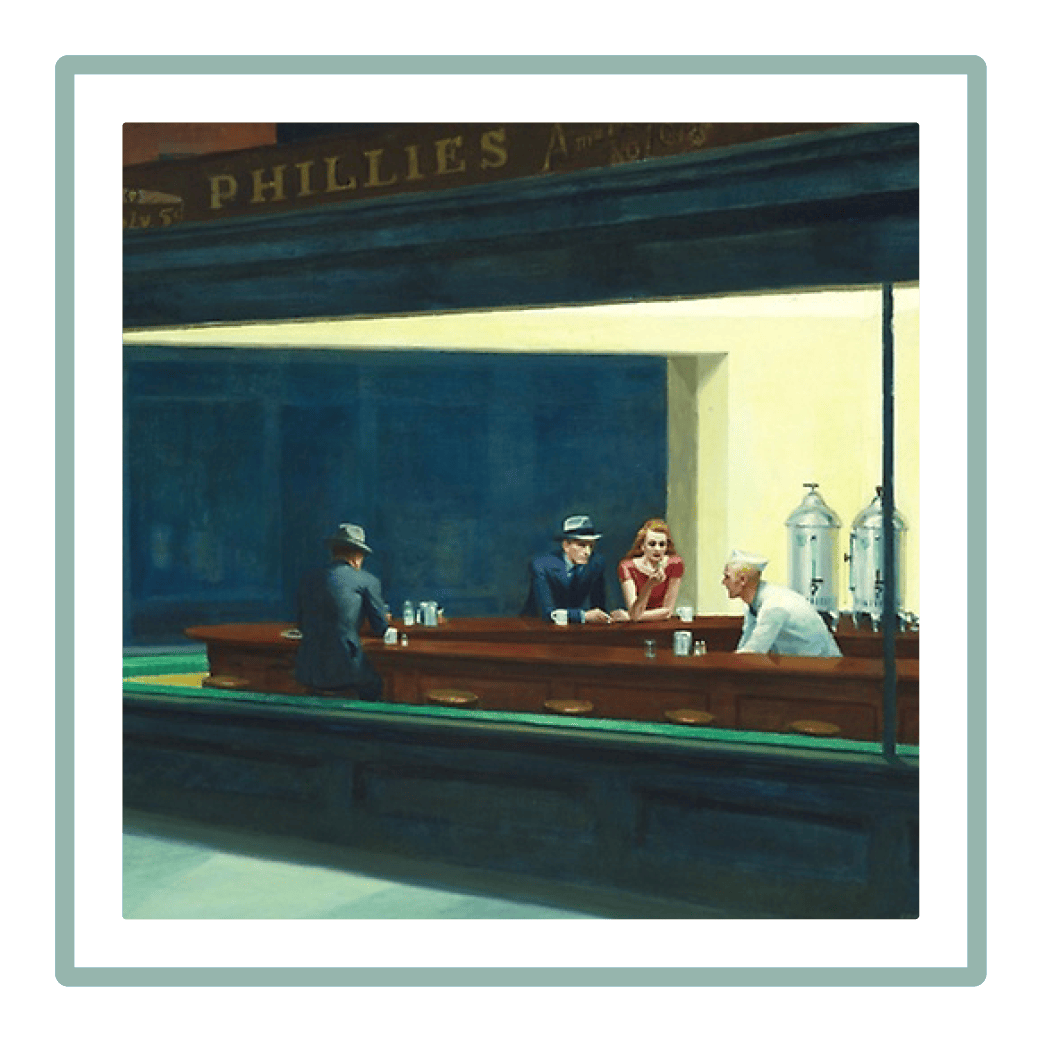
Great Minds
Great Minds PBC is a public benefit corporation and a subsidiary of Great Minds, a nonprofit organization. A group of education leaders founded Great Minds® in 2007 to advocate for a more content-rich, comprehensive education for all children. In pursuit of that mission, Great Minds brings together teachers and scholars to create exemplary instructional materials that provide joyful rigor to learning, spark and reward curiosity, and impart knowledge with equal parts delight.
Topics: Eureka Math







